
Optimization of Shading Devices for Maximum Daylighting
Lots of design scenarios are set up for a project in architecture. These scenarios progress by being subjected to various optimizations. The approach in optimization is to evaluate design alternatives according to certain criteria and to determine the closest convergence to the desired result.
For instance, if you want to use a shading element in designs, you will face too many options. The effect of your choice on the lighting performance, its placement on the facade, being static / kinetic, low cost, perforated… etc. You must choose by considering more than one criterion.
In order to show how important optimization is, we prepared a study to provide better daylighting performance in a place where shading devices are needed. For this study, an open office in Istanbul was modeled (Figure 1). Glazing ratio: 0.46 was determined for the south facing facade of this open office. The time zone where the users spend the most time in the place was accepted as between 09.00-18.00.
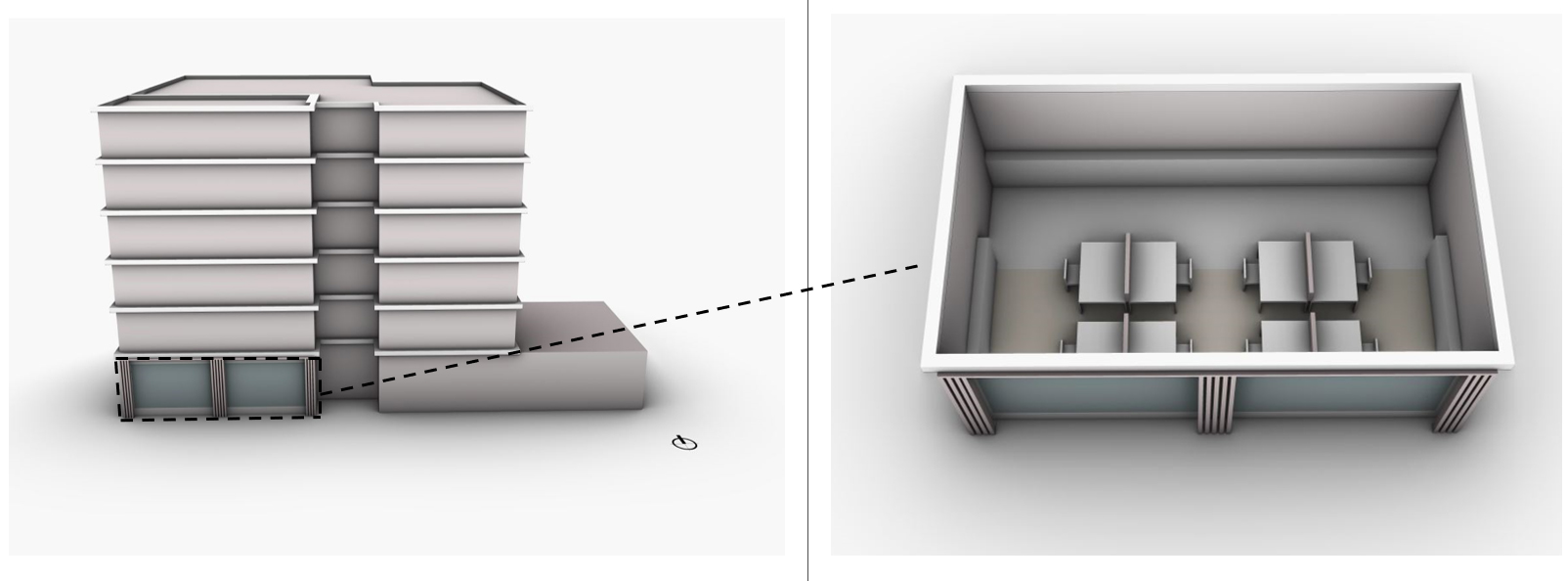
The annual daylight analysis (between 09.00-18.00) of the current state of this place without shading devices was performed (Figure 2). The minimum threshold for daylight performance was defined as 300lux and the maximum threshold as 1500lux. In the legend, the places that provide / do not provide values between 300-1500lux in the year are expressed in percentage notation.
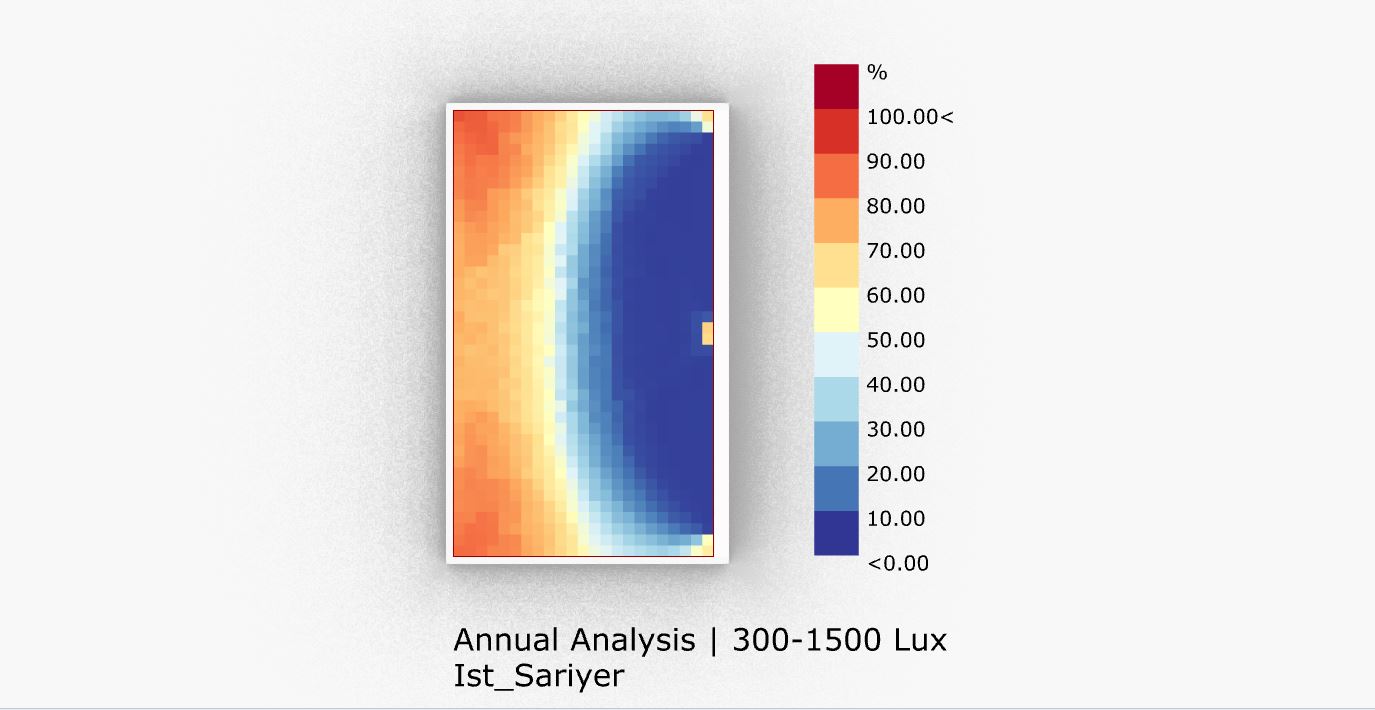
According to the analysis results, it was seen that the areas close to the window were outside the value between 300-1500lux and were uncomfortable. The minimum threshold was kept constant and the maximum threshold was determined as 5000lux. Thus, it was understood that this area was uncomfortable as it was at lux values more than 1500lux (Figure 3).
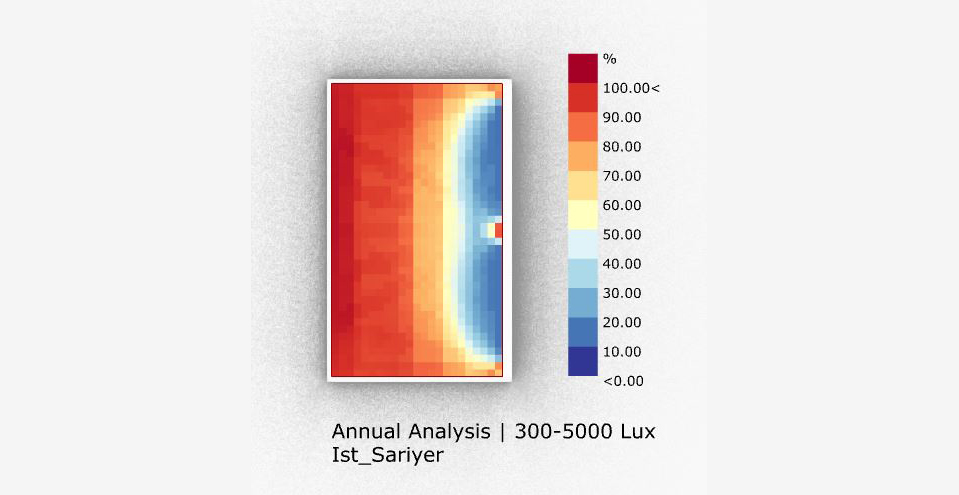
For this reason, it was decided to use shading devices on the façade. Horizontal aluminum composite panel models were selected (Figure 4).
- Alternative 1 : 80cm width, 320cm length, 6 pieces and
- Alternative 2 : 40cm width, 320cm length, 10 pieces

The annual daylight analysis results of these panels, which are placed at 0° (perpendicular to the vertical plane), are given in Figure 5 and Figure 6.
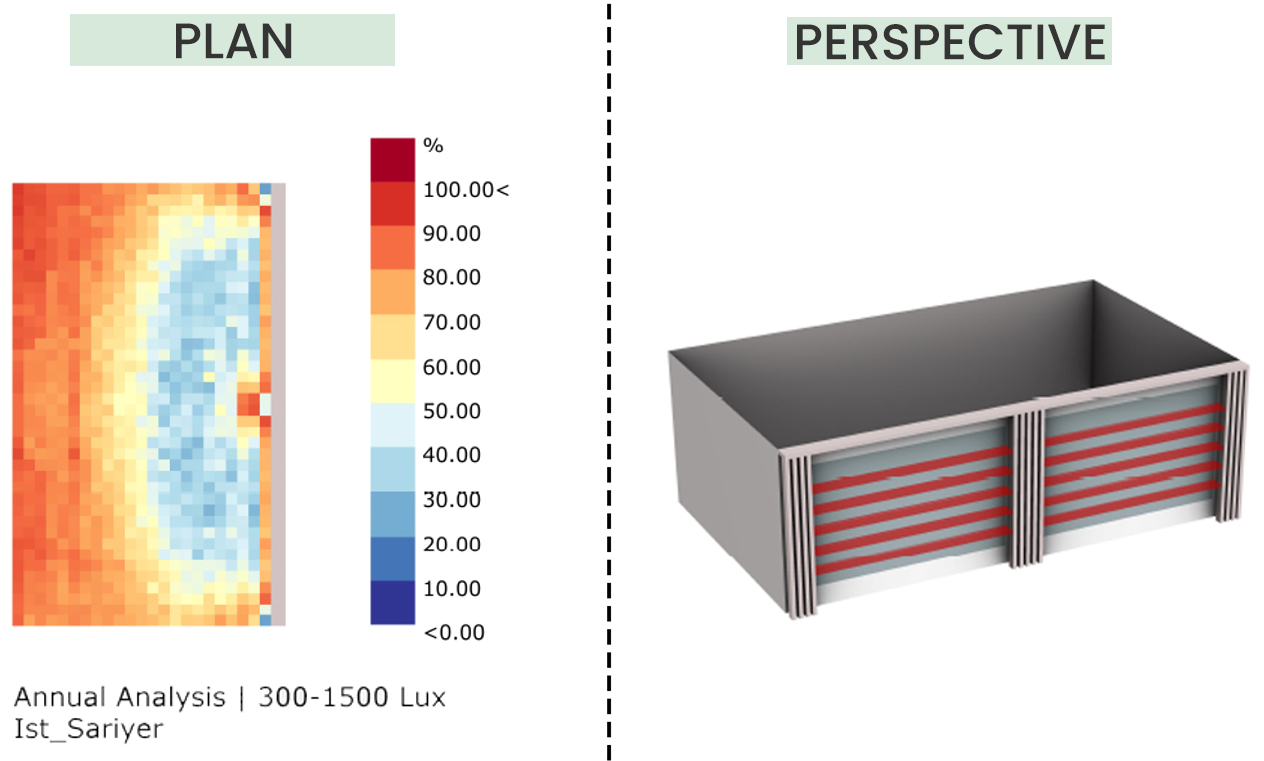
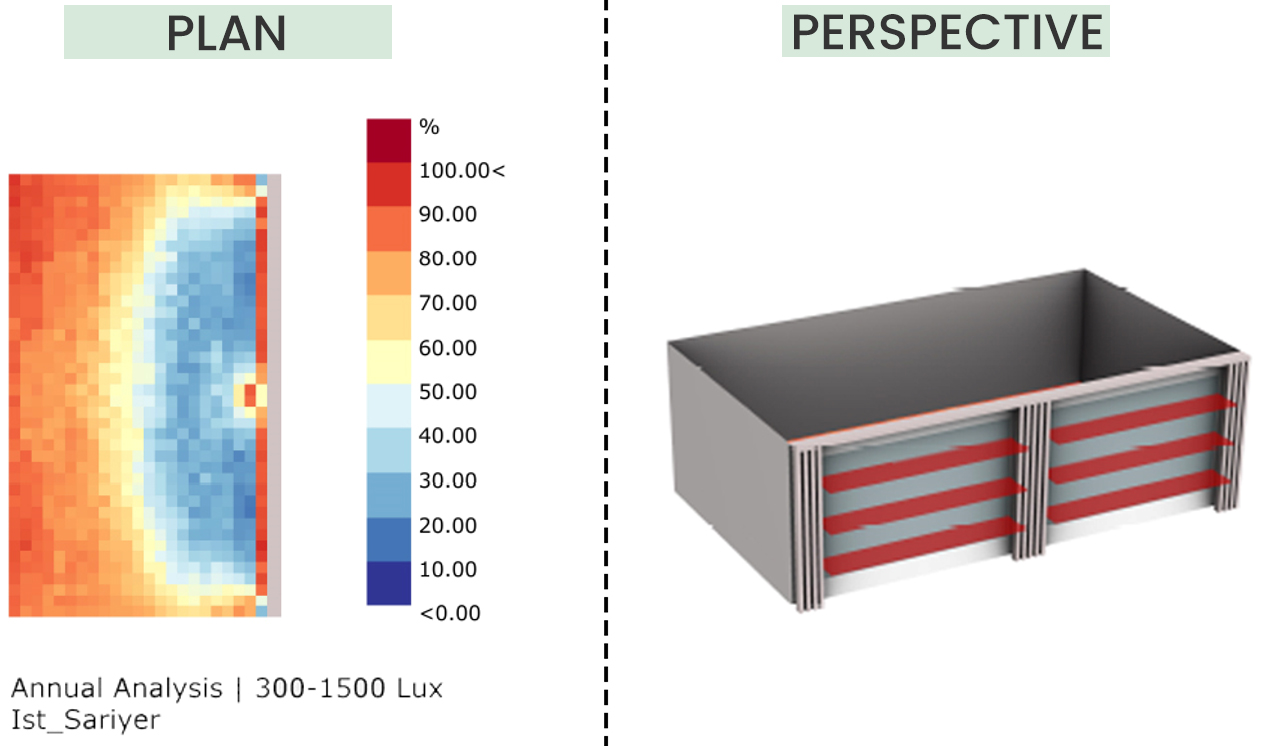
So, is this the right placement angle for best daylighting performance? How should it be?
In these results, the place is discomfort as the regions close to the window are outside the target values. The expected performance has not been achieved. For this reason, as the second step, we will try to provide this value range by changing the angle of shading elements.
To improve the daylighting performance of this place, we need to optimize the angles of the shading devices. With this approach, the positioning of the panels made with the vertical plane at angles of -60°, -50°, -40°, -30°, -20°, -10°, 0°, +10°, +20°, +30°, +40°, +50°, +60° are optimized (Video-1).
The optimization study was also run every day of the year between the period of 09.00 – 18.00 (3650 hours). During the analysis, the angles of the shading devices were solved by the method of genetic algorithm to maximize the values between 300-1500lux in the space.
As a result of the optimization, it has been seen that the placement of both types of panels at an angle of -20° is the best performance for daylighting. The result of the 40cm width panel is given in Figure 7, and the result of the 80cm width panel is given in Figure 8.

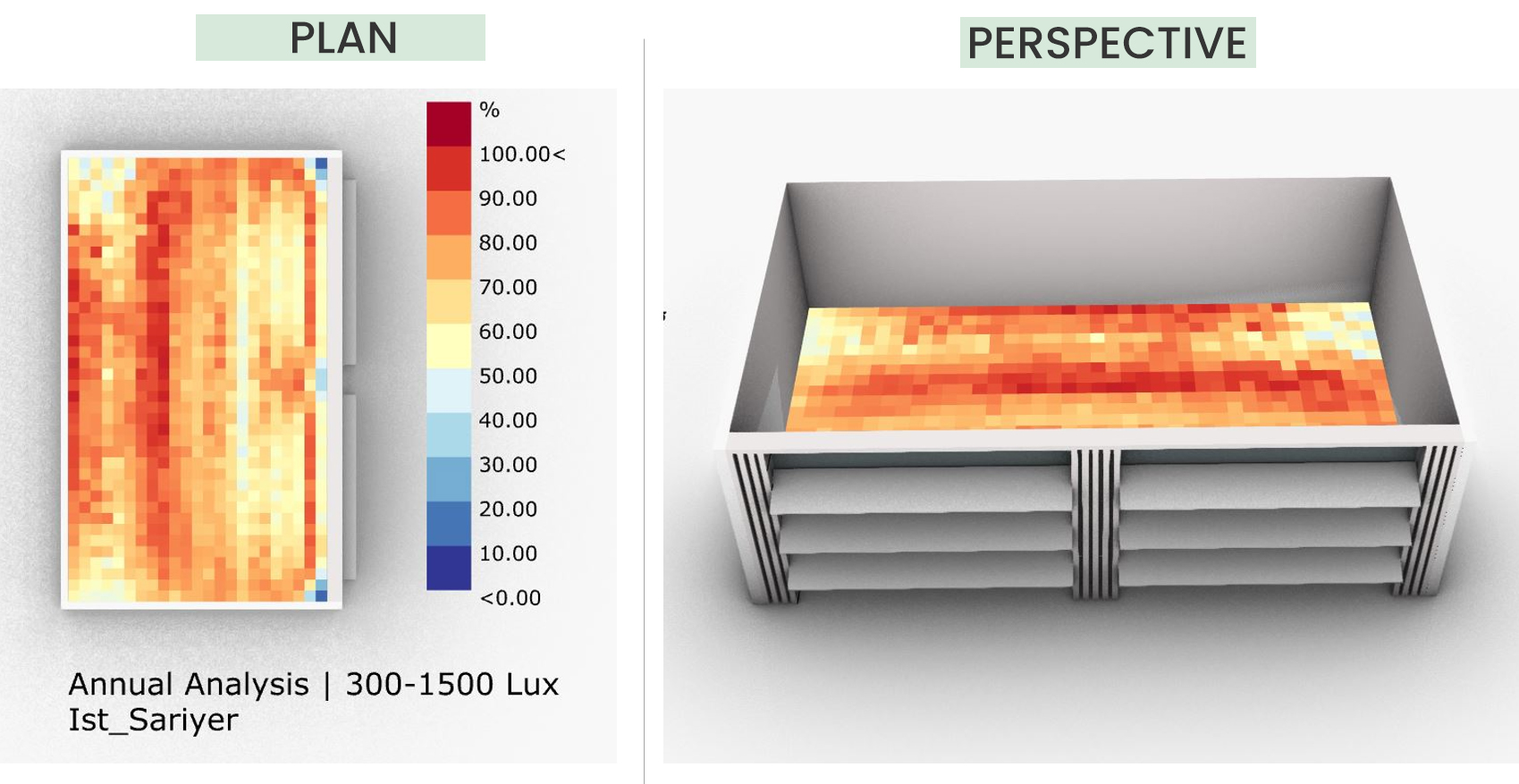
According to the optimization results, the daylighting performance provided by both types of panels in the space is almost the same. However, it would be appropriate to consider the following detail:
- Alternative 1 : 80cm width, 320cm length, 6 pieces (total area: 15.36 m²)
- Alternative 2 : 40cm width, 320cm length, 10 pieces (total area: 12.80 m²)
In this case, it would be appropriate to choose Alternative 2 with a low total area to provide price optimization.
We have completed this work in terms of improving daylighting performance in a space. In our next study, we will review and share the performance optimization of shading devices in terms of energy consumption.



